Introduction: Where Fashion Meets Faith
What you wear to church has always carried meaning beyond the outfit itself. It’s a reflection of reverence, personal identity, spiritual connection, and sometimes, community expectations. For many women, getting dressed on a Sunday morning isn’t just about putting on clothes—it’s a quiet ritual. One that says, I’m preparing for something sacred.
But in a world where fashion evolves daily, where personal expression often collides with tradition, the question emerges: What does it mean to dress for church today?
It means finding that sacred balance—respectful yet stylish, classic yet current. And it means honoring your own journey through clothing that makes you feel grounded, dignified, and beautiful.
This isn’t about strict dress codes or cookie-cutter ensembles. This is about rediscovering what it means to show up in your truth—with modesty, elegance, and your personal style woven into every hemline and neckline.
The Quiet Power of a Thoughtful Outfit
Clothing is often described as superficial. But ask any woman who’s carefully selected her outfit for Easter service or a baptism ceremony—and you’ll hear a different story.
That outfit might carry memory: a skirt passed down from a grandmother, a scarf bought after a breakthrough moment in faith, a pair of shoes that made you feel proud in a room of strangers.
There’s weight to the pieces we choose. Not because of their price tags or trends, but because of how they hold space for us. Because they help us feel ready—to worship, to reflect, to be seen.
For church, especially, clothing has the ability to reflect inner stillness. To communicate grace before a word is spoken. It’s not about perfection—it’s about presence.
What Makes a Great Church Outfit?
Forget any universal checklist of “do’s and don’ts.” The best church outfit is one that feels respectful of the space you’re walking into, while feeling completely like yourself.
You don’t need to be covered from neck to ankle. Nor do you need to wear an uncomfortable pair of pumps to prove reverence. But you should feel secure, elegant, and appropriately dressed for a place of community and spiritual reflection.
That might mean longer hemlines and softer fabrics. It might mean neutral palettes or floral prints that feel Sunday-soft. Or it might be a bold monochrome blazer look that says, Yes, I’m walking in with strength.
There’s no one formula. Just a common thread of intention.
What you wear should feel aligned with the occasion—but also with who you are today. And sometimes, who you’re becoming.
From Pews to Potlucks: Function Meets Style
Church isn’t just about the sermon. It’s often followed by gatherings, meet-and-greets, coffee hours, or volunteer moments. Your outfit doesn’t just need to look good in a pew—it needs to move with you, support you, last through hours of connection.
That’s where functionality enters the conversation.
Breathable fabrics. Shoes you can walk in confidently. Layers that help adjust between sanctuary coolness and outside warmth. These are the silent heroes of a well-put-together church outfit.
Maybe it’s a midi dress you can sit comfortably in. Or a button-up blouse paired with wide-leg trousers that still allow you to kneel or hug someone freely.
When your clothes support your movement, they let your spirit focus on what matters most: presence, not self-consciousness.
Sunday Best—But Make It Yours
The phrase “Sunday best” has long been part of faith-based culture. For generations, it represented a day where people brought out their most cherished pieces—crisp shirts, polished shoes, carefully pressed dresses.
For many, it was a way to honor the ritual. To say, This matters, so I’ve dressed accordingly.
But “Sunday best” doesn’t mean “Sunday stiff.” Today, it can mean linen dresses that breathe. Suits with modern silhouettes. Jumpsuits that blend elegance and ease. Skirts paired with soft knits. Even jeans, when styled right, can reflect quiet respect.
It’s not about extravagance. It’s about elevating the everyday—bringing beauty and thoughtfulness to your wardrobe in a way that reflects your reverence without losing your personality.
And that may look different for every woman—and it should.
Modesty Without Monotony
There’s a common misconception that modesty equals boring. That dressing appropriately for church means covering everything and sacrificing personal flair.
But true modesty isn’t about restriction—it’s about choice. It’s choosing garments that reflect your values. That honor your space and allow others to focus on your presence rather than distraction.
You can be modest and still wear bold colors. You can show shape without showing skin. You can make a fashion statement that’s elegant, not excessive.
Think longer skirts with asymmetrical hems. Blouses with puff sleeves and high collars. Matching sets with flowing silhouettes. Structured midi dresses with cinched waists. Headwraps styled with sophistication.
Modesty is not the absence of style. It’s its own style—and it’s deeply personal.
Textures, Patterns, and Colors That Reflect the Season
Church attire often echoes the seasons—especially in communities that align with the liturgical calendar.
Spring services invite florals, pastels, and soft flowing pieces. Summer may call for cottons and linens in vibrant or tropical prints. Autumn leans into rusts, olives, and deeper tones. Winter often sees velvet, wool, rich navies, and burgundies.
But seasonality isn’t just about temperature. It’s about energy.
How you dress for Easter may feel different from how you dress for a memorial service. A joyful baptism might inspire lighter tones and floaty shapes. A reflective evening mass might pull you toward deeper, grounding hues.
Let your clothing reflect not only the weather—but the moment.
The Role of Accessories: Subtle Enhancements with Purpose
Accessories in church attire should never feel like costume. But they can be deeply expressive—when chosen with care.
A simple cross pendant worn on a delicate chain. A silk scarf tied at the neck or wrapped around natural hair. Pearl earrings that catch the light. A brooch passed down from your auntie that quietly honors her memory.
Even handbags matter—a structured tote that holds your bible and notebook. A clutch that slips into a pew discreetly. A hat that reflects both tradition and modern confidence.
Accessories in church wear are like footnotes—small additions that deepen the meaning without shouting for attention.
Generational Style and Cultural Reverence
For some women, dressing for church is a lineage.
You remember how your grandmother folded her gloves after service. How your mother polished her shoes the night before. How the neighborhood women arrived like a bouquet of color and shape—each one different, all standing for something shared.
Church style can hold legacy. It honors culture—whether it’s a Ghanaian kente skirt worn with pride, a lace mantilla passed through Latin generations, or a sharply tailored African-American church suit that says this is our space too.
Today’s woman often blends that history with contemporary flair—mixing vintage pieces with Zara finds. Reimagining cultural garments through new cuts or colors.
It’s not about trend. It’s about timelessness, anchored in identity.
Body Confidence in Sacred Spaces
Walking into a church building, some women feel a quiet pressure—will this outfit draw too much attention? Will it seem inappropriate? Will it feel frumpy? Too bold? Too plain?
The truth is: sacred spaces should never make you question your worth—or your beauty.
Dressing for church should support your body, not conceal it in shame. You deserve to feel beautiful without apology. Elegant without suppression. Comfortable without sacrificing form.
Whether you’re curvy, petite, tall, or aging beautifully into new dimensions, your outfit should serve you—not societal rules.
That means tailored fits. Flattering cuts. Breathable fabrics. And most importantly, compassionate eyes in the mirror.
You are enough, exactly as you are—and your outfit should reflect that truth.
Check out this Ideas and SAVE your favorite
1. A-Line Midi Dress with Low Heels
A-line midi dresses are effortlessly elegant and timelessly modest. They hit below the knee, making them appropriate for church, while still feeling flowy and feminine.
Why it works: It’s flattering on all body types and perfect for year-round services.
Styling Tips:
- Choose muted florals or solid pastel colors.
- Add a lightweight cardigan or a cropped blazer if needed.
- Pair with low kitten heels or ballet flats and a leather tote.
1
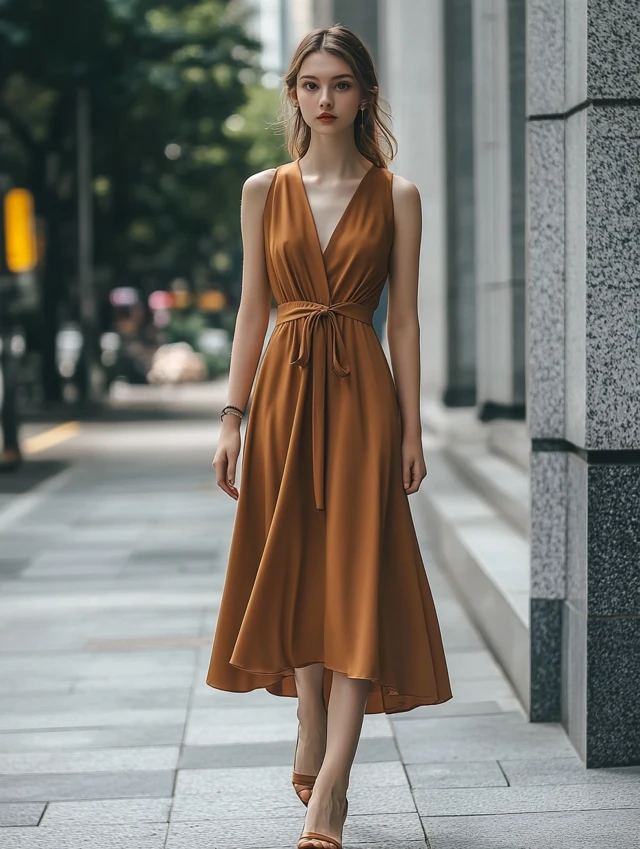
2

Buy this A-line midi dress styled with chic low heels. The dress flatters with its fitted waist and graceful flare, while the low heels keep it polished yet comfortable for all-day wear. Perfect for workdays, brunch, or special occasions — shop this timeless outfit now before it sells out.”
3
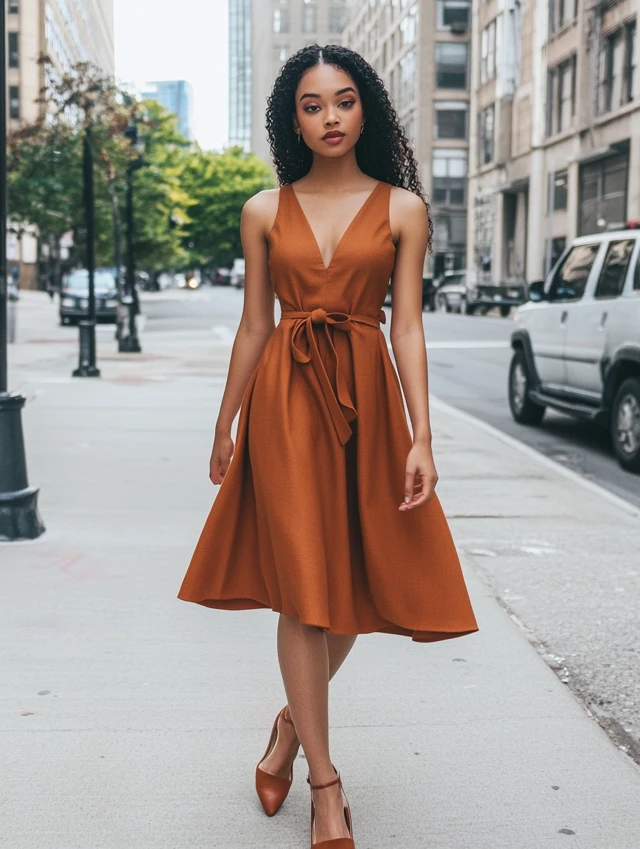
Best For: Sunday morning services, Easter brunch, or any traditional worship day.
2. Pencil Skirt with a Blouse and Cardigan
This combo is sleek, structured, and respectful—a great choice for women who prefer tailored looks.
Why it works: The silhouette feels mature but stylish, and the cardigan keeps the outfit modest.
Styling Tips:
- Tuck a silk or chiffon blouse into a high-waisted skirt.
- Choose skirts that hit just at the knee or slightly below.
- Complete the look with nude heels and gold stud earrings.
1

2
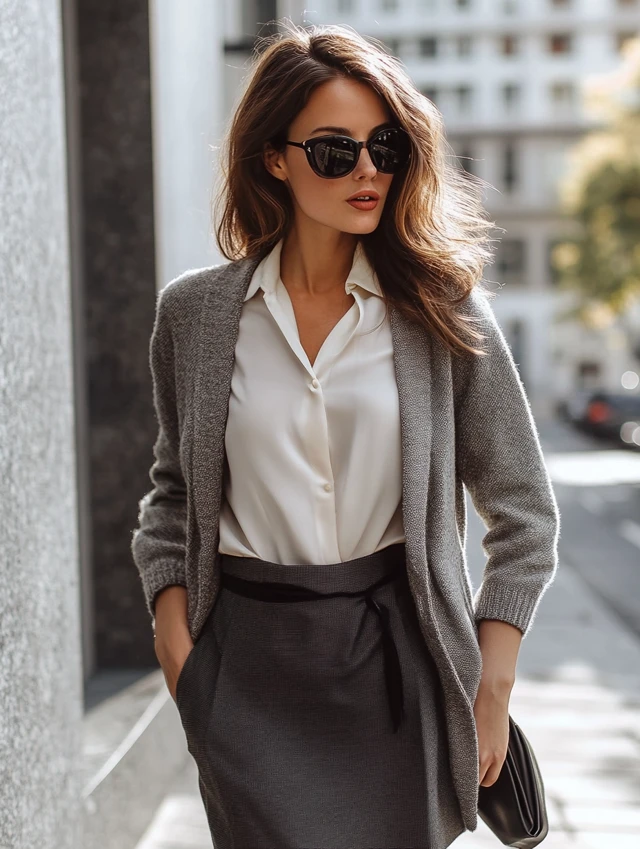
Buy this pencil skirt styled with a classic blouse and cozy cardigan. The pencil skirt creates a sleek, flattering silhouette, the blouse adds timeless sophistication, and the cardigan softens the look with versatile comfort. Perfect for office days, business meetings, or evening events — shop this must-have outfit now before it sells out.”
3
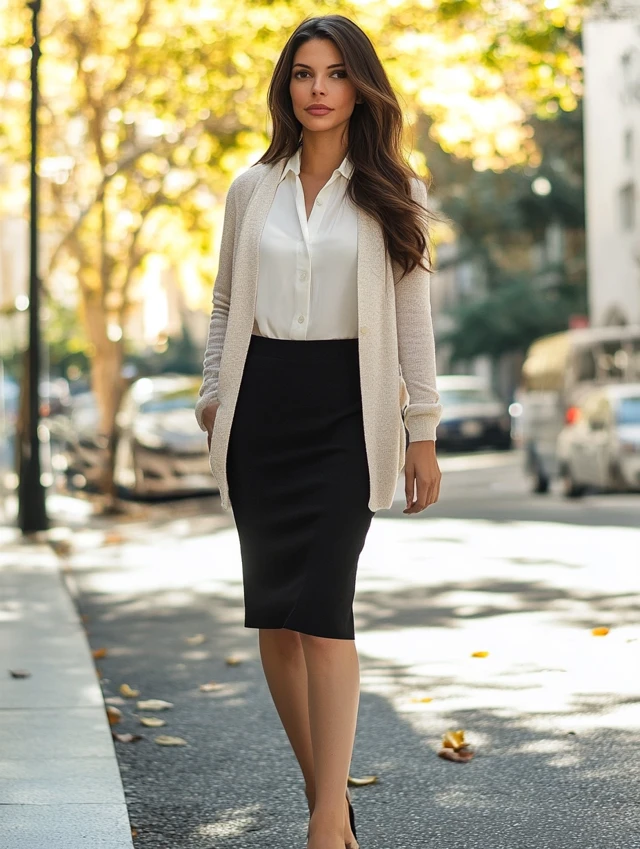
Best For: Business-casual dress codes, midweek services, or church conferences.
3. Pleated Maxi Skirt with a Tucked-In Top
Maxi skirts offer coverage while adding movement and grace to your step. Pleated versions elevate the look even more.
Why it works: The length ensures modesty, and pleats add structure and elegance.
Styling Tips:
- Pair with a fitted knit top or a button-down shirt.
- Belt the waist to create shape.
- Wear with ankle-strap flats or wedges and a headband.
1

2

Buy this pleated maxi skirt paired with a tucked-in top. The pleated skirt adds feminine flow and movement, while the tucked-in top creates a flattering, polished silhouette. Perfect for office wear, brunch dates, or chic evening outings — shop this must-have outfit now before it sells out.”
3

4

Best For: Spring and summer services, women’s retreats, and family worship.
4. Midi-Length Wrap Dress
Wrap dresses create a defined waistline while offering coverage across the chest and arms.
Why it works: It allows for easy movement and looks flattering on all shapes.
Styling Tips:
- Opt for long or three-quarter sleeves.
- Wear with low block heels or ankle boots.
- Accessorize with a small handbag and a delicate cross necklace.
1

2
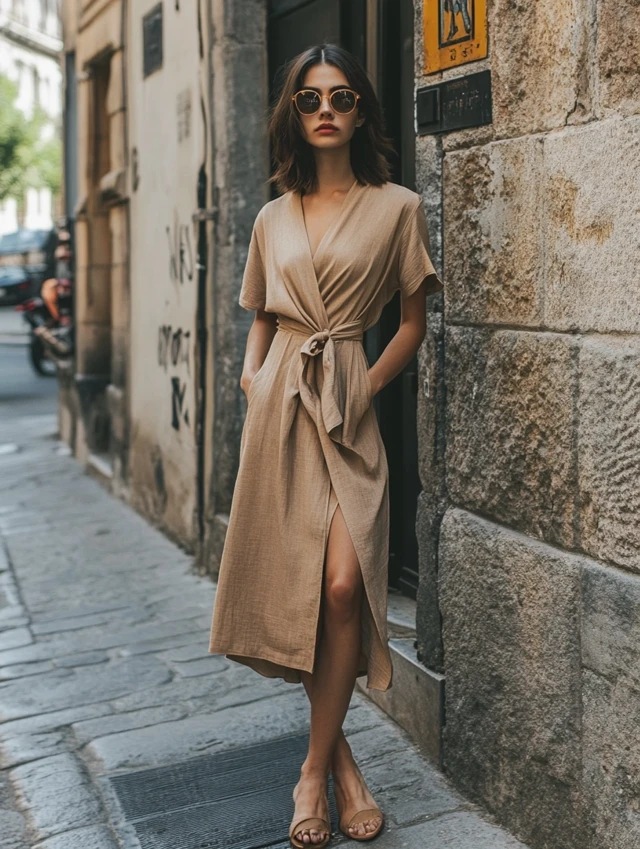
Buy this midi-length wrap dress — designed to flatter every figure with its adjustable fit. The wrap style cinches the waist beautifully, while the midi length adds timeless sophistication for both day and evening wear. Perfect for workdays, brunch, or special occasions — shop this must-have dress now before it sells out.”
3
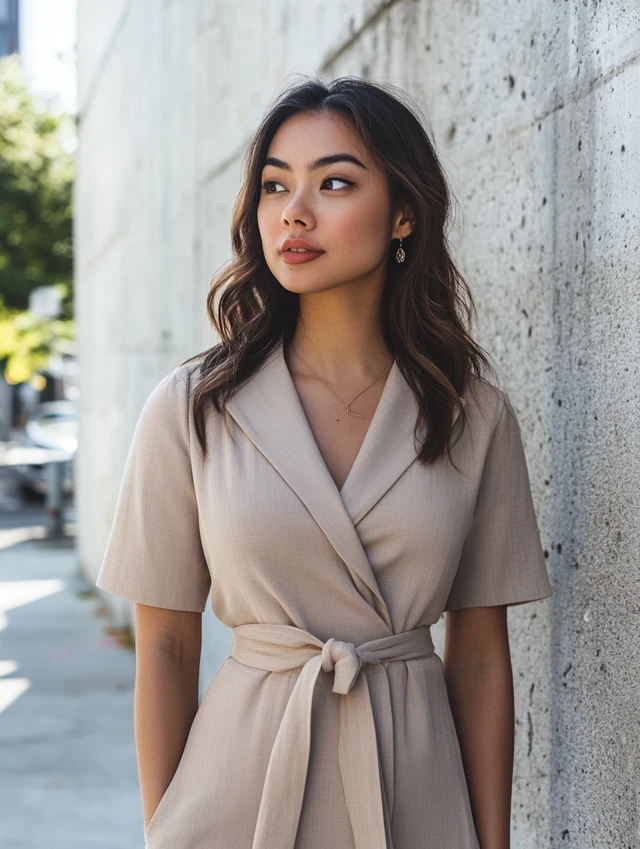
4

Best For: Baptism Sundays, church luncheons, or guest visits.
5. Jumpsuit with Modest Neckline
A tailored jumpsuit can be both stylish and respectful—especially with high necklines and wide legs.
Why it works: It’s a modern one-piece look that feels intentional and easy to wear.
Styling Tips:
- Look for flowy, non-clingy fabrics like crepe or rayon.
- Add a linen blazer if sleeves are short.
- Complete the outfit with block heels and pearl earrings.
1

2

Buy this jumpsuit featuring a modest neckline — the perfect mix of elegance and comfort. The tailored fit creates a flattering silhouette, while the higher neckline keeps it sophisticated and versatile for any occasion. Perfect for office days, evening dinners, or special events — shop this timeless jumpsuit now before it sells out.
3
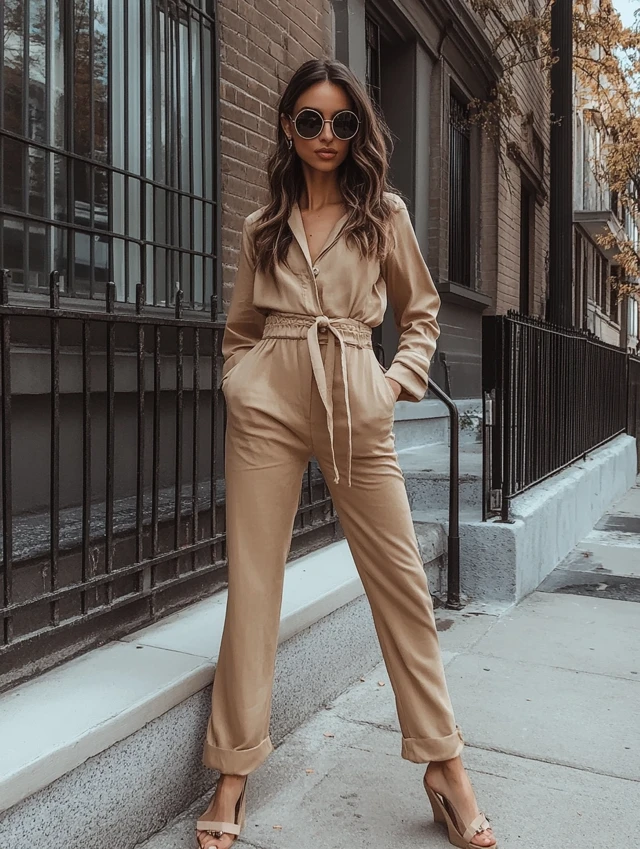
4
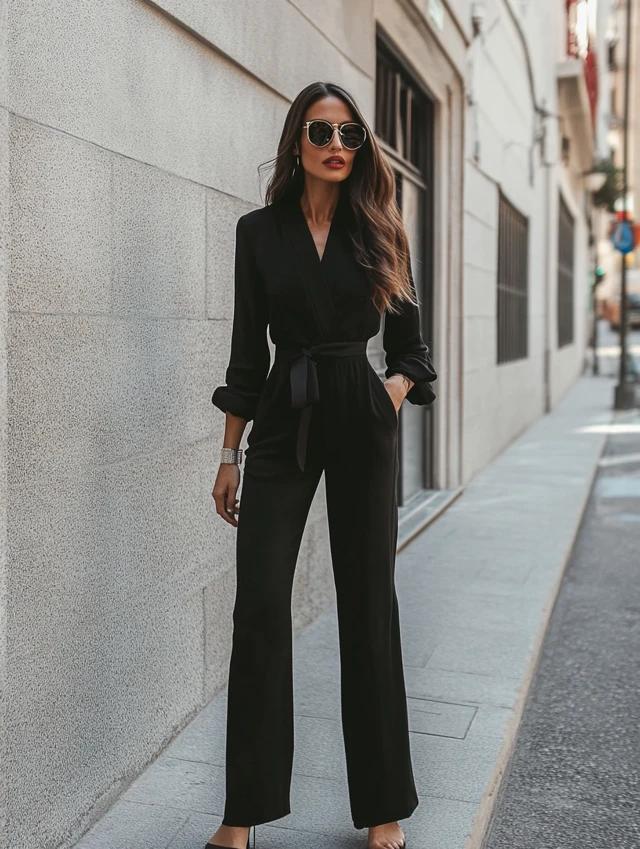
Best For: Modern churches, young adult groups, or evening services.
6. Culottes with a Button-Up Blouse
Culottes are a stylish alternative to skirts. When paired with a crisp blouse, they feel polished and purposeful.
Why it works: Offers freedom of movement and maintains a sophisticated vibe.
Styling Tips:
- Choose culottes in neutral or soft colors.
- Tuck in your blouse and add a thin belt.
- Pair with loafers or soft pointed flats.
1
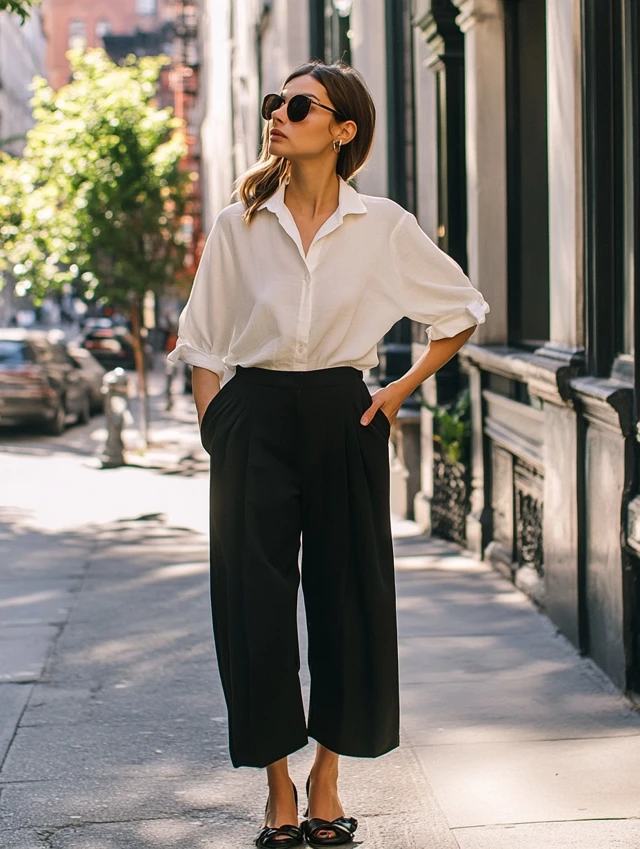
2
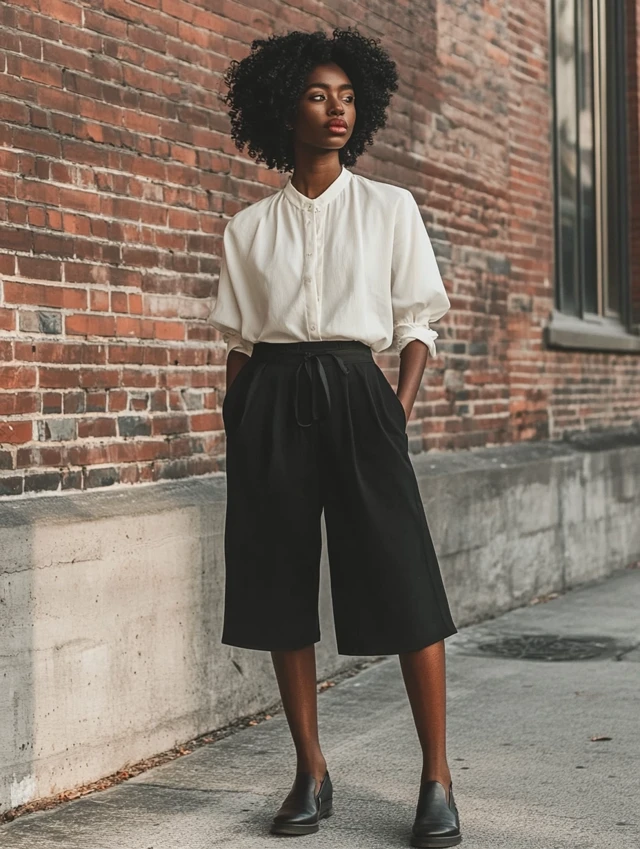
Buy this culottes styled with a crisp button-up blouse. The culottes add flowy comfort with a modern wide-leg fit, while the blouse keeps the look polished and versatile for any occasion. Perfect for office wear, brunch, or city strolls — shop this must-have outfit now before it sells out.”
3
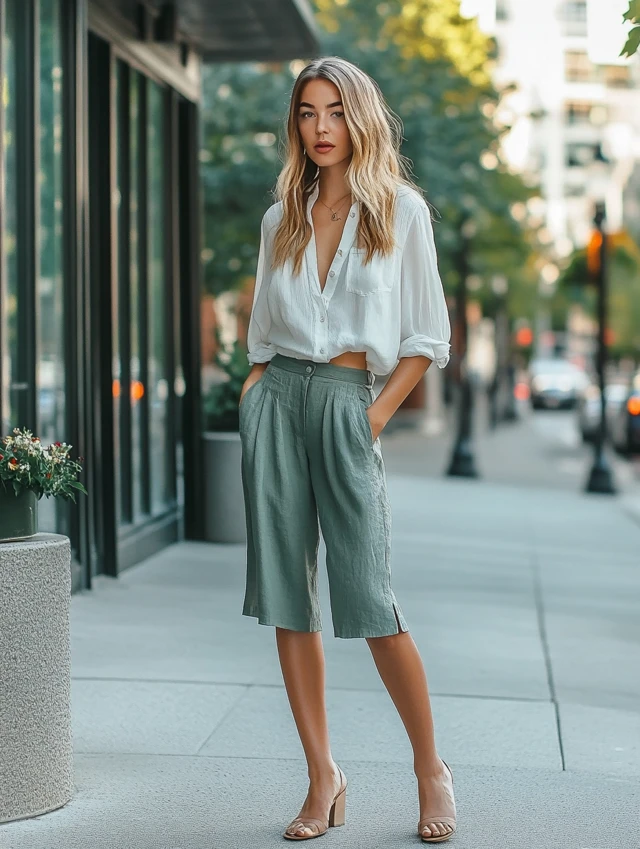
Best For: Teaching Sundays, group sessions, or small church events.
7. Modest Floral Dress with Puff Sleeves
Puff-sleeve dresses are feminine and fashion-forward, while floral prints add softness.
Why it works: They bring personality to the outfit without compromising on decency.
Styling Tips:
- Go for a midi length to maintain balance.
- Pair with neutral sandals or Mary Janes.
- Style with a straw bag and minimal makeup.
1
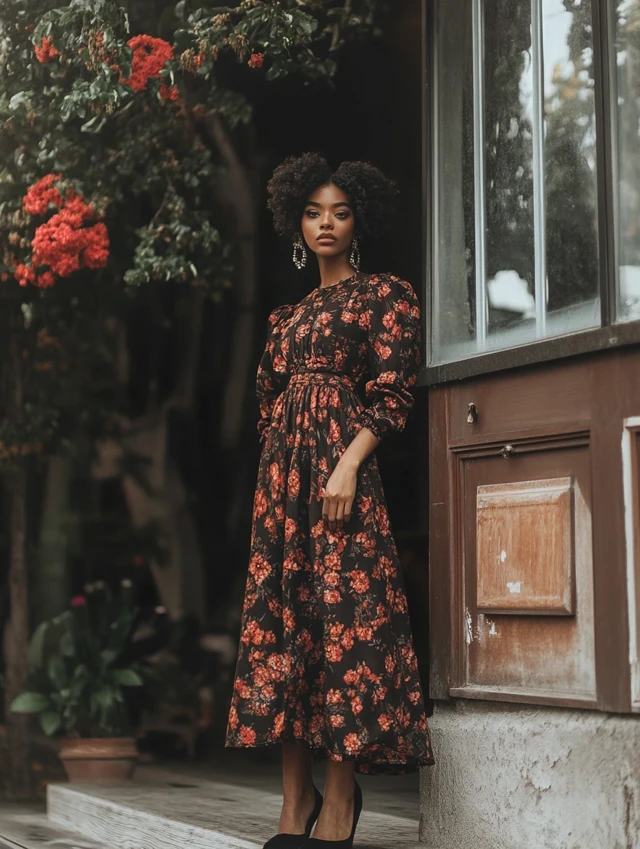
2

Buy this modest floral dress featuring chic puff sleeves. The floral print brings timeless charm, the puff sleeves add a romantic touch, and the modest cut keeps it sophisticated for any occasion. Perfect for brunch, weddings, or special gatherings — shop this must-have dress now before it sells out.”
3
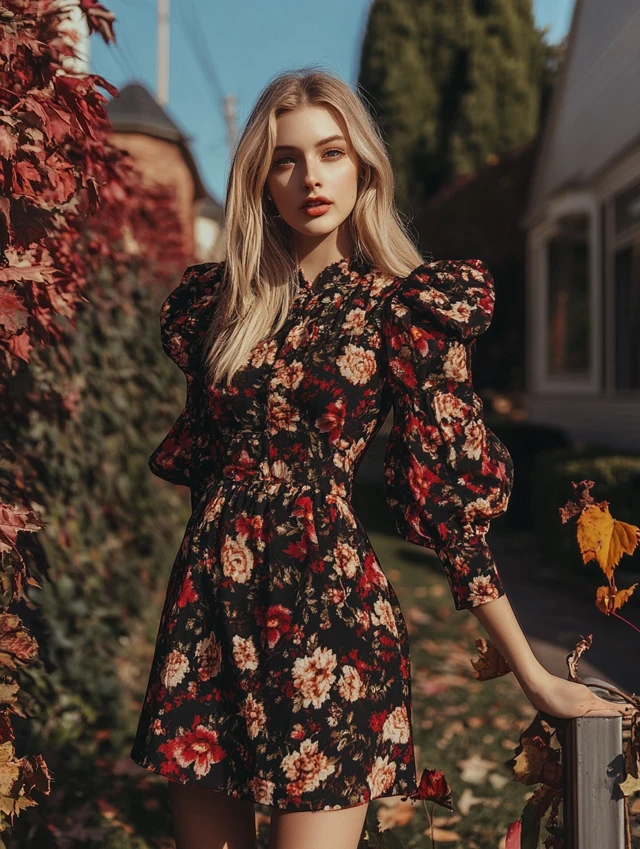
4
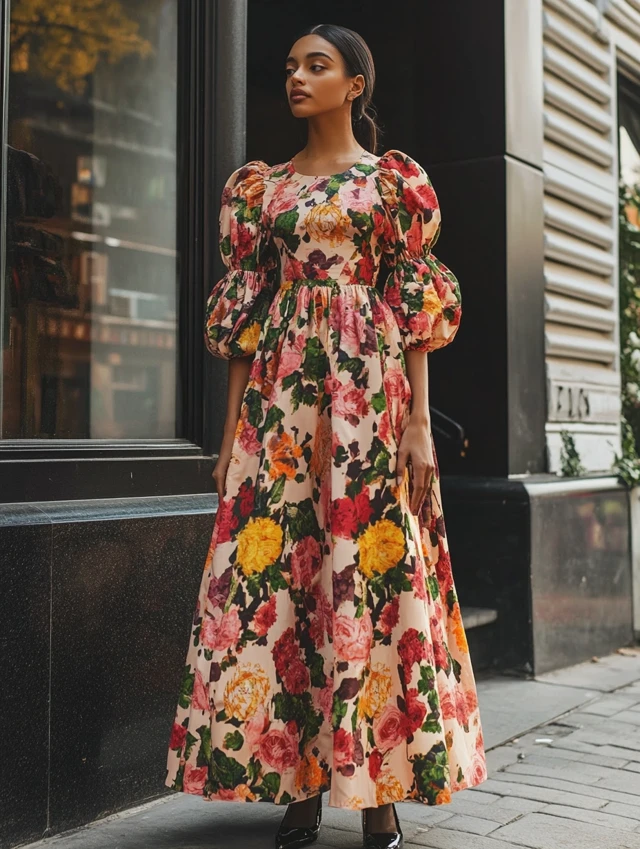
Best For: Spring services, Mother’s Day, and outdoor church events.
8. Shift Dress with Closed-Toe Shoes
Shift dresses are simple, modest, and great for layering. Their straight silhouette flatters most figures while maintaining formality.
Why it works: Ideal for quick outfit planning and effortlessly appropriate for any occasion.
Styling Tips:
- Choose textured fabrics like tweed or linen.
- Wear with low block heels or loafers.
- Add a pearl necklace or a printed scarf.
1
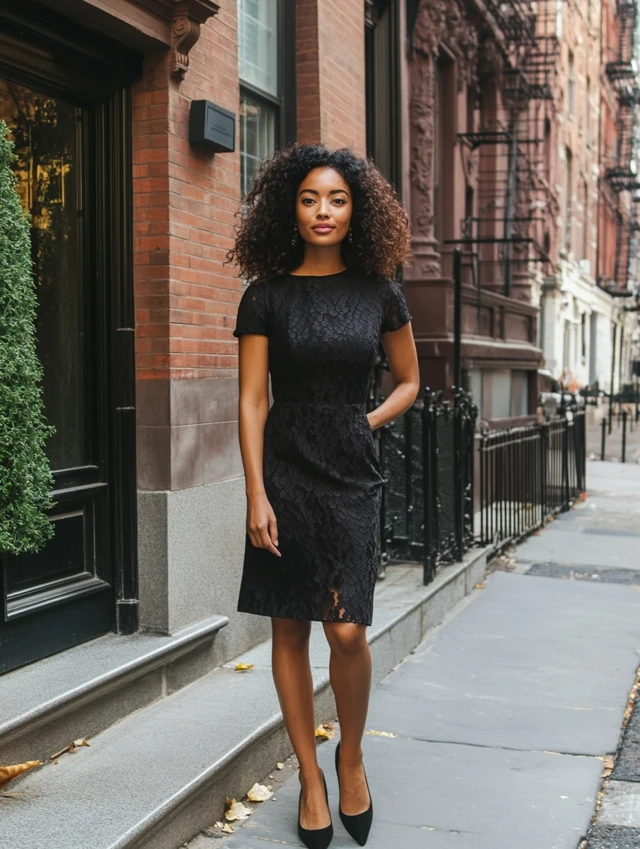
2
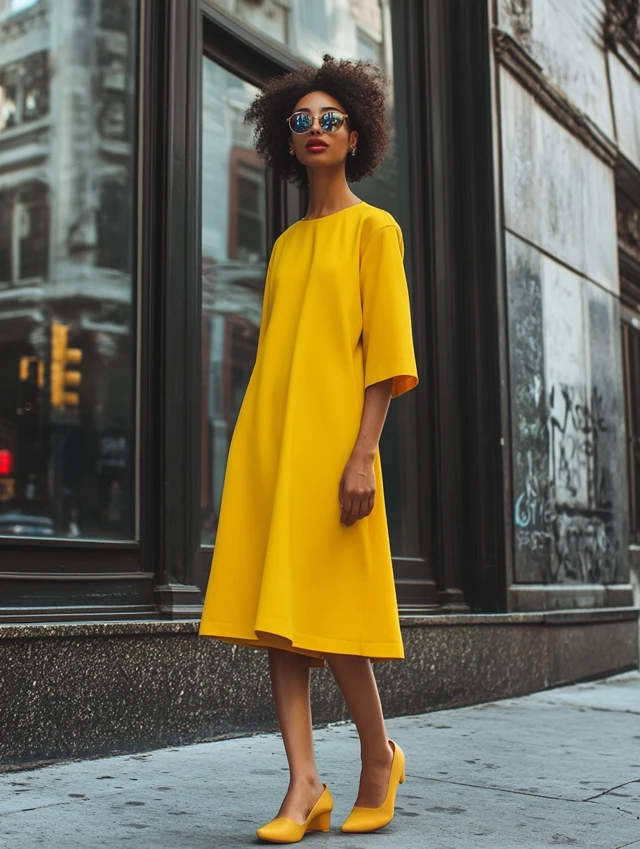
Buy this classic shift dress styled with chic closed-toe shoes. The dress drapes beautifully with a relaxed yet flattering fit, while the closed-toe shoes add timeless sophistication and all-day comfort. Perfect for office days, business meetings, or evening events — shop this must-have outfit now before it sells out.”
3
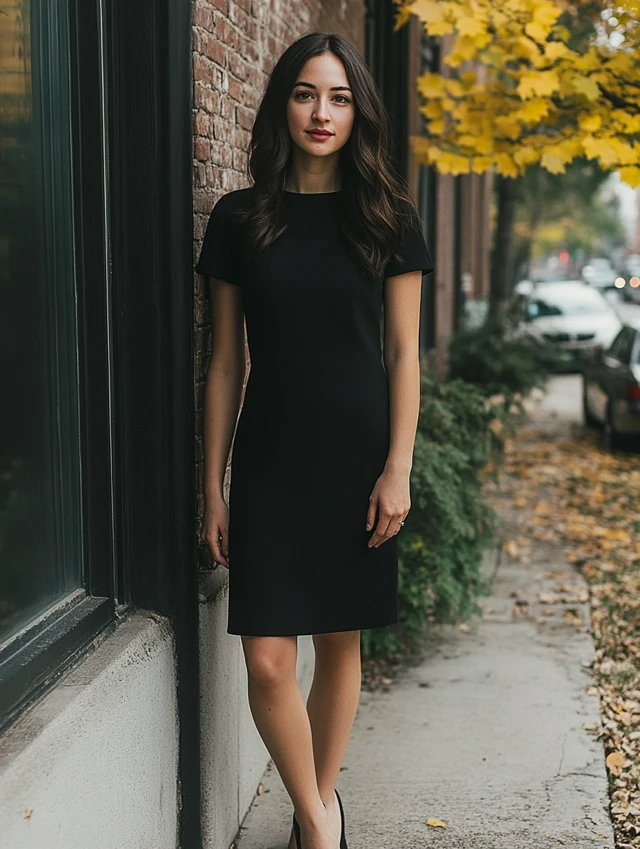
4

Best For: Older women, deacons, or traditional church roles.
9. High-Waisted Trousers with a Ruffle Top
This stylish pairing lets you balance modesty with a touch of playfulness through feminine silhouettes.
Why it works: Trousers offer a tailored base while a ruffle top adds softness.
Styling Tips:
- Go monochrome or use complementary color blocking.
- Add a skinny belt and platform loafers.
- Keep accessories simple with stud earrings or a crossbody bag.
1

2

Buy this high-waisted trousers paired with a top. The trousers create a flattering, elongating silhouette, while the ruffle detail adds soft elegance and charm. Perfect for office wear, brunch dates, or evening outings — shop this timeless outfit now before it sells out.”
3

4

Best For: Young professionals, mentors, or Bible study gatherings.
10. Maxi Dress with a Denim Jacket
For a more casual church vibe, a printed maxi dress layered with a denim jacket hits the right notes of comfort and modesty.
Why it works: It’s effortless and layered, ideal for transitional weather and long services.
Styling Tips:
- Choose a floral or polka dot pattern for the dress.
- Add tan sandals or espadrilles.
- Accessorize with a delicate necklace and neutral tote.
1

2

Buy this flowy maxi dress layered under a classic denim jacket. The dress adds feminine elegance and movement, while the denim jacket keeps the look casual-cool and versatile across seasons. Perfect for brunch, travel days, or weekend outings — shop this must-have outfit now before it sells out.”
3

Best For: Youth services, community outreach, or casual Sunday dress codes.
Confidence Is the Finishing Touch
At the end of it all, no accessory, cut, color, or trend matters more than confidence. The kind that comes from aligning your inner peace with your outer presentation.
You could wear a thrifted dress, $20 shoes, and a borrowed coat—but if you step into the sanctuary with grace, dignity, and authenticity? You are radiant.
That’s what church wear is really about.
It’s not a performance. It’s not a trend.
It’s a way to show up in alignment with the space you’re walking into—and with the woman you’re becoming.
Final Reflections: Dressing for Your Spirit, Not Just the Occasion
As Sunday morning approaches, and you begin to pull out your options—maybe steaming a blouse, polishing your shoes, wrapping your scarf—remember: this isn’t a chore. This is a devotion.
You’re not dressing to impress. You’re dressing to express—gratitude, joy, reverence, peace.
So take your time. Let your clothing feel intentional. Let it reflect your faith, your culture, your identity. And remember: there’s no such thing as the “perfect church outfit.”
There’s only the outfit that makes you feel prepared to step into a sacred space—with head high, heart full, and style that whispers:
I belong here. Just as I am.